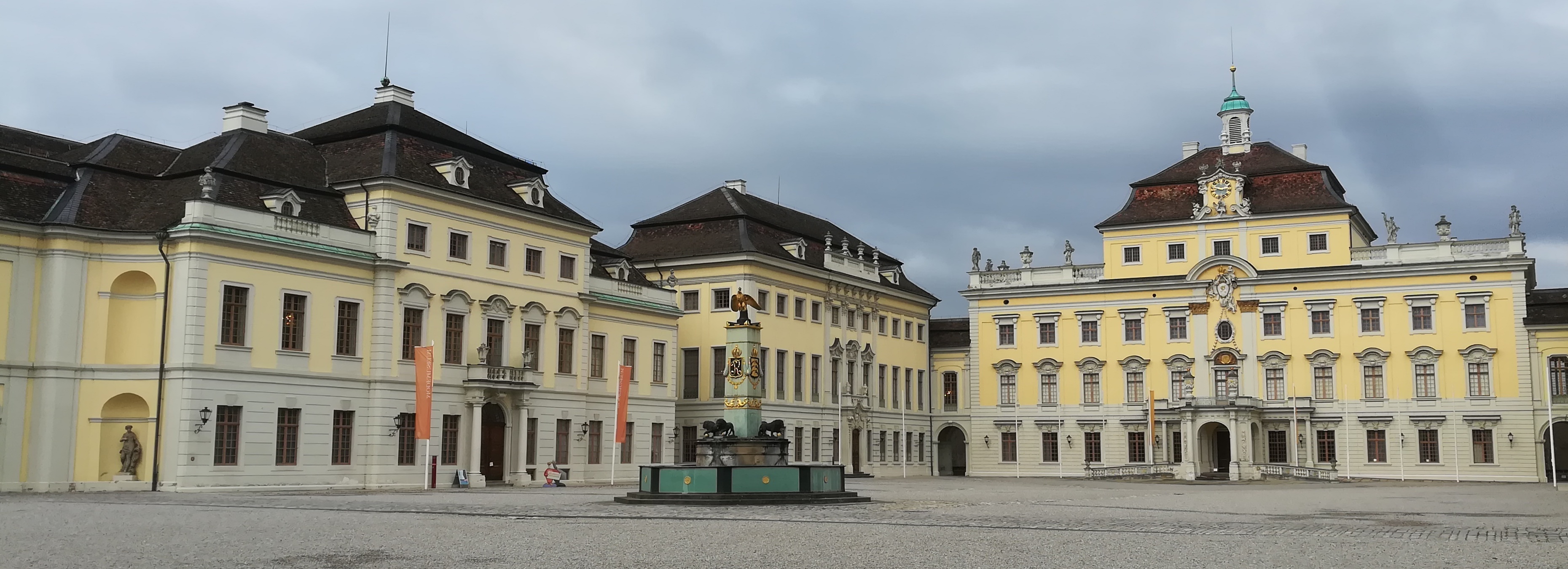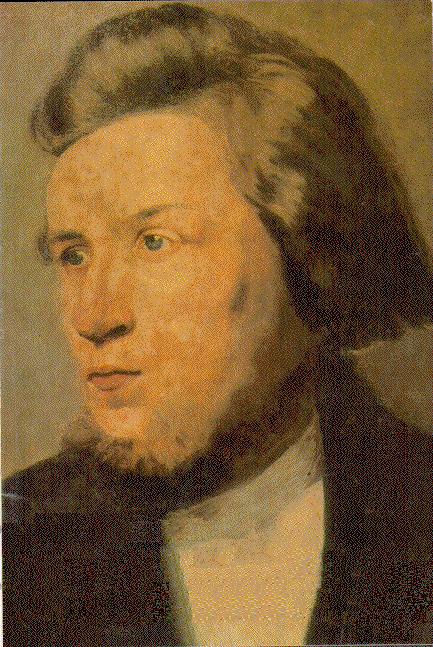|
Harmony Society
The Harmony Society was a Christian theosophy and pietist society founded in Iptingen, Germany, in . Due to religious persecution by the Lutheran Church and the government in Württemberg, the group moved to the United States,Robert Paul Sutton, ''Communal Utopias and the American Experience: Religious Communities'' (Westport, CT: Praeger, 2004) p. 38. where representatives initially purchased land in Butler County, Pennsylvania. On February 15, 1805, the group of approximately 400 followers formally organized the Harmony Society, placing all their goods in common. Under its founder and spiritual leader, Johann Georg Rapp (1757–1847); Frederick (Reichert) Rapp (1775–1834), his adopted son who managed its business affairs; and their associates, the Society existed for one hundred years, roughly from 1805 until 1905. Members were known as Harmonists, Harmonites, or Rappites. The Society is best known for its worldly successes, most notably the establishment of three model c ... [...More Info...] [...Related Items...] OR: [Wikipedia] [Google] [Baidu] |
Duchy Of Württemberg
The Duchy of Württemberg (german: Herzogtum Württemberg) was a duchy located in the south-western part of the Holy Roman Empire. It was a member of the Holy Roman Empire from 1495 to 1806. The dukedom's long survival for over three centuries was mainly due to its size, being larger than its immediate neighbors. During the Protestant Reformation, Württemberg faced great pressure from the Holy Roman Empire to remain a member. Württemberg resisted repeated French invasions in the 17th and 18th centuries. Württemberg was directly in the path of French and Austrian armies who were engaged in the long rivalry between the House of Bourbon and the House of Habsburg. In 1803, Napoleon raised the duchy to be the Electorate of Württemberg of the Holy Roman Empire. On 1 January 1806, the last Elector assumed the title of King of Württemberg. Later that year, on 6 August 1806, the last Emperor, Francis II, Holy Roman Emperor, Francis II, abolished (de facto) the Holy Roman Empire. G ... [...More Info...] [...Related Items...] OR: [Wikipedia] [Google] [Baidu] |
Commune (intentional Community)
An intentional community is a voluntary residential community which is designed to have a high degree of social cohesion and teamwork from the start. The members of an intentional community typically hold a common social, political, religious, or spiritual vision, and typically share responsibilities and property. This way of life is sometimes characterized as an " alternative lifestyle". Intentional communities can be seen as social experiments or communal experiments. The multitude of intentional communities includes collective households, cohousing communities, coliving, ecovillages, monasteries, survivalist retreats, kibbutzim, hutterites, ashrams, and housing cooperatives. History Ashrams are likely the earliest intentional communities founded around 1500 BCE, while Buddhist monasteries appeared around 500 BCE. Pythagoras founded an intellectual vegetarian commune in about 525 BCE in southern Italy. Hundreds of modern intentional communities were formed across ... [...More Info...] [...Related Items...] OR: [Wikipedia] [Google] [Baidu] |
De Gruyter
Walter de Gruyter GmbH, known as De Gruyter (), is a German scholarly publishing house specializing in academic literature. History The roots of the company go back to 1749 when Frederick the Great granted the Königliche Realschule in Berlin the royal privilege to open a bookstore and "to publish good and useful books". In 1800, the store was taken over by Georg Reimer (1776–1842), operating as the ''Reimer'sche Buchhandlung'' from 1817, while the school’s press eventually became the ''Georg Reimer Verlag''. From 1816, Reimer used the representative Sacken'sche Palace on Berlin's Wilhelmstraße for his family and the publishing house, whereby the wings contained his print shop and press. The building became a meeting point for Berlin salon life and later served as the official residence of the president of Germany. Born in Ruhrort in 1862, Walter de Gruyter took a position with Reimer Verlag in 1894. By 1897, at the age of 35, he had become sole proprietor of the h ... [...More Info...] [...Related Items...] OR: [Wikipedia] [Google] [Baidu] |
Haugean Movement
The Haugean movement or Haugeanism ( no, haugianere) was a Pietistic state church reform movement intended to bring new life and vitality into the Church of Norway which had been often characterized by formalism and lethargy. The movement emphasized personal diligence, enterprise and frugality. Background The Haugean movement took its name from the lay evangelist Hans Nielsen Hauge (1771–1824). It played an important part in nurturing the democratic folk movement of the time, and stimulating the entrance into politics of representatives of the rural population. It increased tensions between the more privileged classes and the common people, as well as between the clergy and the laity.From revolt to hegemony ''Tysvær Local History Book. Volume 9; Such as They Lived'', Svein Ivar Langhelle, Tysvær ... [...More Info...] [...Related Items...] OR: [Wikipedia] [Google] [Baidu] |
Fairleigh Dickinson University
Fairleigh Dickinson University is a private university with its main campuses in the U.S. state of New Jersey. Founded in 1942, Fairleigh Dickinson University currently offers more than 100 degree programs to its students. In addition to its two campuses in New Jersey, the university also has a campus in Canada, a campus in the United Kingdom, and an online platform. Fairleigh Dickinson University is New Jersey's largest private institution of higher education, with over 12,000 students. History Fairleigh Dickinson University was founded as the Fairleigh Dickinson Junior College in 1942 as a junior college by Dr. Peter Sammartino and wife Sally, and was named after an early benefactor Colonel Fairleigh S. Dickinson, co-founder of Becton Dickinson. Its original campus was located in Rutherford, NJ. By 1948, Fairleigh Dickinson Junior College expanded its curriculum to offer a four-year program when the GI Bill and veterans' money encouraged it to redesignate itself as Fairleig ... [...More Info...] [...Related Items...] OR: [Wikipedia] [Google] [Baidu] |
Emanuel Swedenborg
Emanuel Swedenborg (, ; born Emanuel Swedberg; 29 March 1772) was a Swedish pluralistic-Christian theologian, scientist, philosopher and mystic. He became best known for his book on the afterlife, ''Heaven and Hell'' (1758). Swedenborg had a prolific career as an inventor and scientist. In 1741, at 53, he entered into a spiritual phase in which he began to experience dreams and visions, notably on Easter Weekend, on 6 April 1744. His experiences culminated in a "spiritual awakening" in which he received a revelation that Jesus Christ had appointed him to write ''The Heavenly Doctrine'' to reform Christianity. According to ''The Heavenly Doctrine'', the Lord had opened Swedenborg's spiritual eyes so that from then on, he could freely visit heaven and hell to converse with angels, demons and other spirits, and that the Last Judgment had already occurred in 1757, the year before the 1758 publication of ''De Nova Hierosolyma et ejus doctrina coelesti'' (English: ''Concernin ... [...More Info...] [...Related Items...] OR: [Wikipedia] [Google] [Baidu] |
Johann Heinrich Jung
Johann Heinrich Jung (12 September 1740, in Grund – 2 April 1817, in Karlsruhe), better known by his assumed name Heinrich Stilling, was a German author. Life He was born in the village of Grund (now part of Hilchenbach) in Westphalia. His father, Wilhelm Jung, a schoolmaster and tailor, was the son of Eberhard Jung, charcoal burner, and his mother was Johanna Dorothea née Fischer, the daughter of Moritz Fischer, a poor clergyman and alchemist. Jung became at his father's wish a schoolmaster and tailor. After various teaching appointments he went in 1768 to study medicine at the University of Strasbourg. There he met Goethe, who introduced him to Herder. In the second volume of his autobiography ''Dichtung und Wahrheit. Aus meinem Leben'', Goethe discusses Jung. In 1772 Jung settled at Elberfeld as physician and oculist, and soon became celebrated for cataract operations. He performed over 3,000 cataract operations during his lifetime. In 1778 he accepted an appointment as ... [...More Info...] [...Related Items...] OR: [Wikipedia] [Google] [Baidu] |
Philipp Jakob Spener
Philipp Jakob Spener (23 January 1635 – 5 February 1705), was a German Lutheran theologian who essentially founded what would become to be known as Pietism. He was later dubbed the "Father of Pietism". A prolific writer, his two main works, ''Pia desideria'' (1675) and ''Allgemeine Gottesgelehrtheit'' (1680), were published while he was the chief pastor in the Lutheran Church at Frankfurt. In 1691, he was invited to Berlin by the court of Brandenburg. Even in Berlin, Spener was at odds with the predominant Lutheran orthodoxy, as he had been all his life. Spener influenced the foundation of the University of Halle, but the theological faculty of another university, that of Wittenberg, formally accused him of 264 errors. Life Spener was born in Rappoltsweiler, Upper Alsace (now part of France, at the time part of the Holy Roman Empire). After a brief time at the grammar school of Colmar, he went to Strasbourg in 1651, where he devoted himself to the study of philology, history a ... [...More Info...] [...Related Items...] OR: [Wikipedia] [Google] [Baidu] |
Jakob Böhme
Jakob Böhme (; ; 24 April 1575 – 17 November 1624) was a German philosopher, Christian mystic, and Lutheran Protestant theologian. He was considered an original thinker by many of his contemporaries within the Lutheran tradition, and his first book, commonly known as ''Aurora'', caused a great scandal. In contemporary English, his name may be spelled Jacob Boehme (retaining the older German spelling); in seventeenth-century England it was also spelled Behmen, approximating the contemporary English pronunciation of the German ''Böhme''. Böhme had a profound influence on later philosophical movements such as German idealism and German Romanticism. Hegel described Böhme as "the first German philosopher". Biography Böhme was born on 24 April 1575 at Alt Seidenberg (now Stary Zawidów, Poland), a village near Görlitz in Upper Lusatia, a territory of the Kingdom of Bohemia. His father, George Wissen, was Lutheran, reasonably wealthy, but a peasant nonetheless. Böhme was the f ... [...More Info...] [...Related Items...] OR: [Wikipedia] [Google] [Baidu] |
Beaver County, Pennsylvania
Beaver County is a county in the Commonwealth of Pennsylvania. As of the 2020 census, the population was 168,215. Its county seat is Beaver. The county was created on March 12, 1800, from parts of Allegheny and Washington counties. It took its name from the Beaver River. Beaver County is part of the Pittsburgh, PA Metropolitan Statistical Area. History The original townships at the date of the erection of Beaver County (1800) were North Beaver, east and west of the Big Beaver Creek; South Beaver, west of the Big Beaver; and Sewickley, east of the Big Beaver—all north of the Ohio River; and Hanover, First Moon, and Second Moon, south of the Ohio. Geography According to the U.S. Census Bureau, the county has a total area of , of which is land and (2.1%) is water. It has a humid continental climate (''Dfa''/''Dfb'') and average monthly temperatures in the Beaver/Rochester vicinity range from 29.4 °F in January to 73.2 °F in July. Bodies of water * The Ohio ... [...More Info...] [...Related Items...] OR: [Wikipedia] [Google] [Baidu] |
Indiana
Indiana () is a U.S. state in the Midwestern United States. It is the 38th-largest by area and the 17th-most populous of the 50 States. Its capital and largest city is Indianapolis. Indiana was admitted to the United States as the 19th state on December 11, 1816. It is bordered by Lake Michigan to the northwest, Michigan to the north, Ohio to the east, the Ohio River and Kentucky to the south and southeast, and the Wabash River and Illinois to the west. Various indigenous peoples inhabited what would become Indiana for thousands of years, some of whom the U.S. government expelled between 1800 and 1836. Indiana received its name because the state was largely possessed by native tribes even after it was granted statehood. Since then, settlement patterns in Indiana have reflected regional cultural segmentation present in the Eastern United States; the state's northernmost tier was settled primarily by people from New England and New York, Central Indiana by migrants fro ... [...More Info...] [...Related Items...] OR: [Wikipedia] [Google] [Baidu] |








